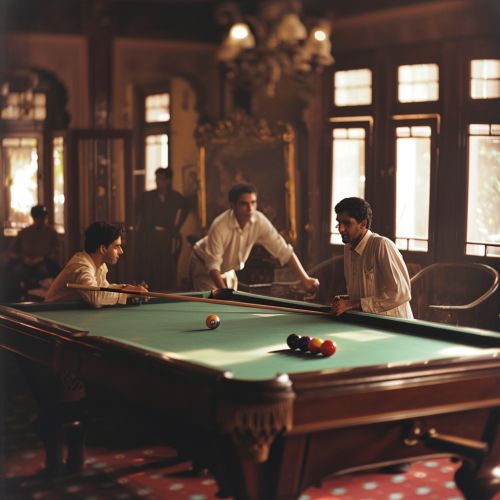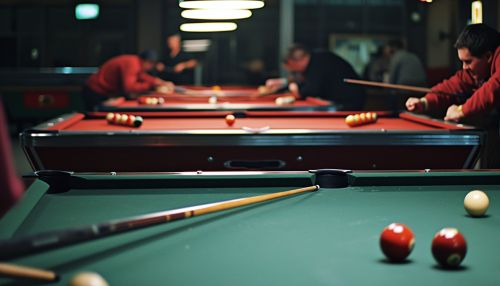Billiards
History
Billiards, as we know it today, has evolved from a lawn game similar to the croquet played sometime during the 15th century in Northern Europe. It was a popular indoor game among the nobility and the aristocracy. The game was played with a wooden stick (known as a mace) and balls on a table covered with a green cloth to simulate grass.
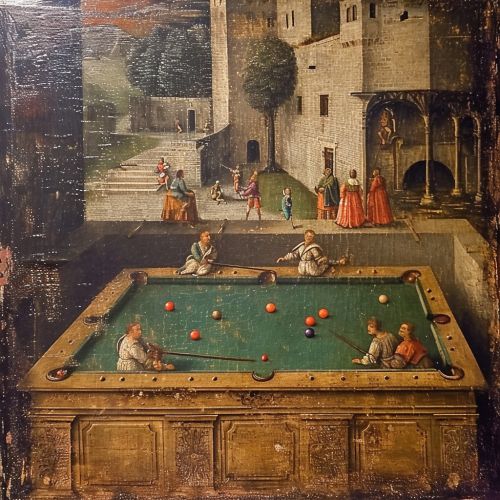
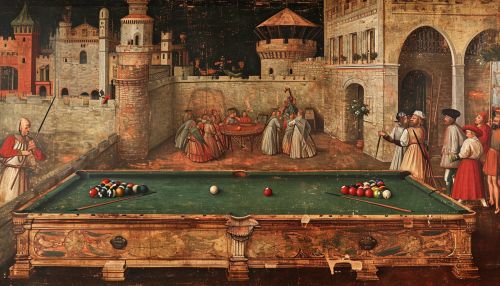
The term "billiard" is derived from French, either from the word "billart", one of the wooden sticks, or "bille", a ball. The game was originally played with two balls on a six-pocket table, and the balls were shoved, rather than struck, with wooden sticks called "maces".
Over time, the game evolved and became more refined. By the 1800s, the mace had all but disappeared, replaced by the cue stick which is used to strike the ball. The table had also evolved, with the six-pocket design becoming standard.
Equipment
A typical billiards game requires several pieces of equipment, including a rectangular billiards table, billiard balls, and a cue stick.
The billiard table is a large, rectangular table covered in a tight-fitting cloth, usually green, with cushions lining the inner sides of the table. The table is marked with various points used for scoring and positioning.
The billiard balls are small, hard balls used in the game. They are typically made of phenolic resin, a material that is both durable and resistant to chipping and cracking. The balls are numbered and colored according to the specific game being played.
The cue stick, or simply cue, is a long, tapered stick used to strike the billiard balls. It is usually made of wood, but can also be made of fiberglass or carbon fiber.
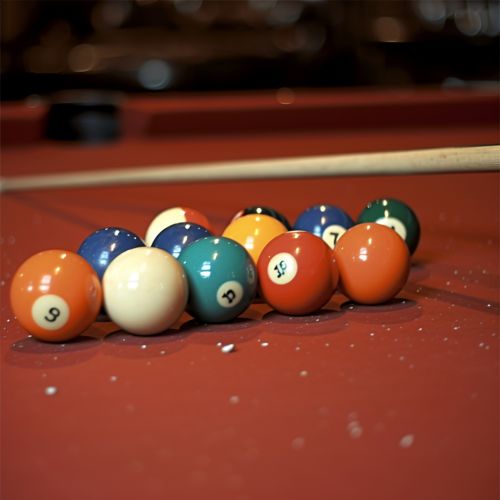

Gameplay
The objective of a game of billiards varies depending on the specific game being played, but generally involves using the cue stick to strike the cue ball, which in turn hits other balls and attempts to get them into the pockets of the table.
In a game of eight-ball, the most common game of billiards, the game begins with the balls arranged in a triangle at one end of the table. The player breaks the formation with the cue ball, and from there, players take turns trying to pocket their assigned balls (either stripes or solids), with the ultimate goal of pocketing the eight ball.
In nine-ball, another popular game, players take turns to strike the balls in ascending numerical order, with the objective of pocketing the nine ball.
Strategy and Techniques
Billiards is a game of strategy and skill, and mastering it requires understanding of physics and geometry. Players must calculate angles, force, spin, and even the material properties of the cue and balls.
One of the most basic techniques in billiards is the billiard shot, where the player strikes the cue ball in a way that it hits two other balls. This requires precise aim, control, and understanding of angles.
Another common technique is the bank shot, where the player strikes the cue ball in such a way that it bounces off the cushion of the table before hitting the target ball.


Variations of the Game
There are several variations of billiards, each with its own rules and strategies. These include eight-ball, nine-ball, straight pool, and snooker.
Eight-ball is perhaps the most common and well-known variation of billiards. It is played with 15 balls, and the player's goal is to pocket all of their assigned balls (either stripes or solids) before pocketing the eight ball.
Nine-ball is another popular variation, played with just nine balls. Players must hit the balls in ascending numerical order, with the game ending when the nine ball is pocketed.
Straight pool, also known as 14.1 continuous, is a more complex game where players can pocket any ball, but must call the ball and pocket they will hit.
Snooker is a British variation of billiards that is played on a larger table and uses 21 balls, including 15 red balls and 6 balls of different colors.
Billiards in Popular Culture
Billiards has been featured in numerous films, television shows, and books, often as a symbol of sophistication and strategy. It has also been the subject of several documentaries and has a significant following in online gaming.
